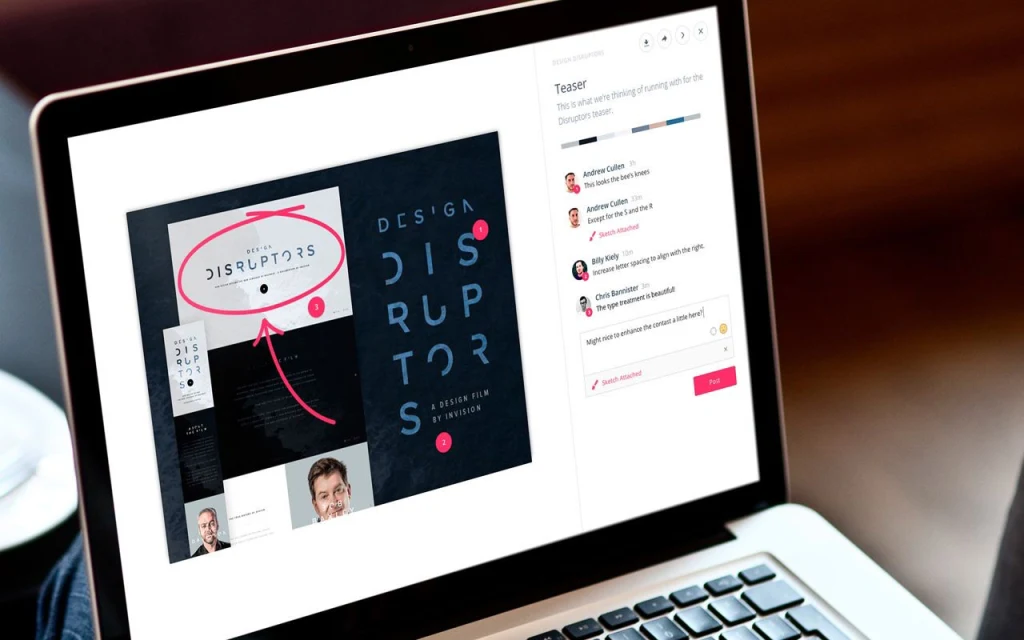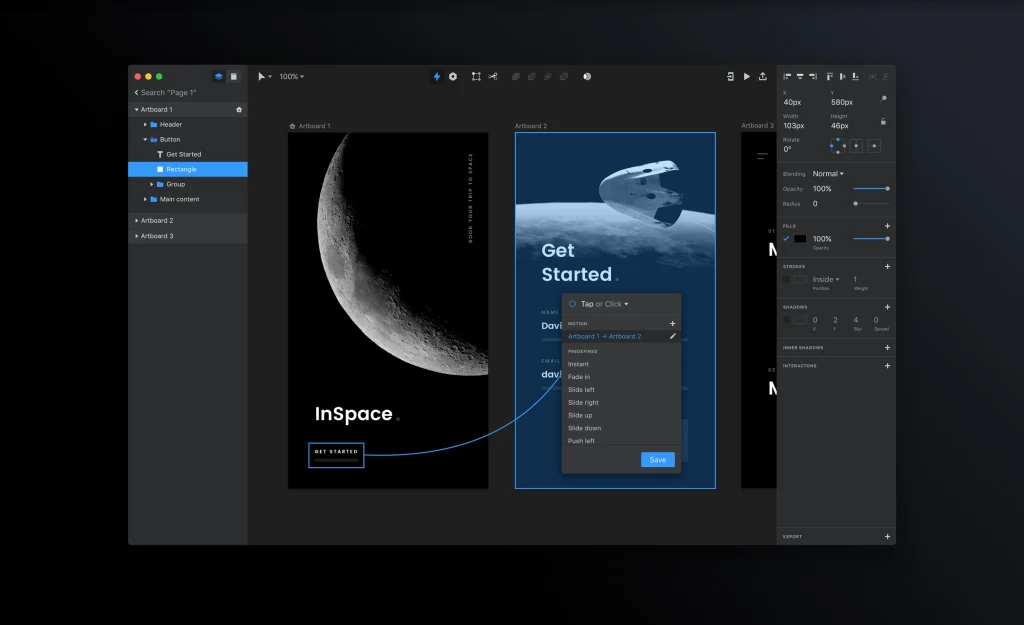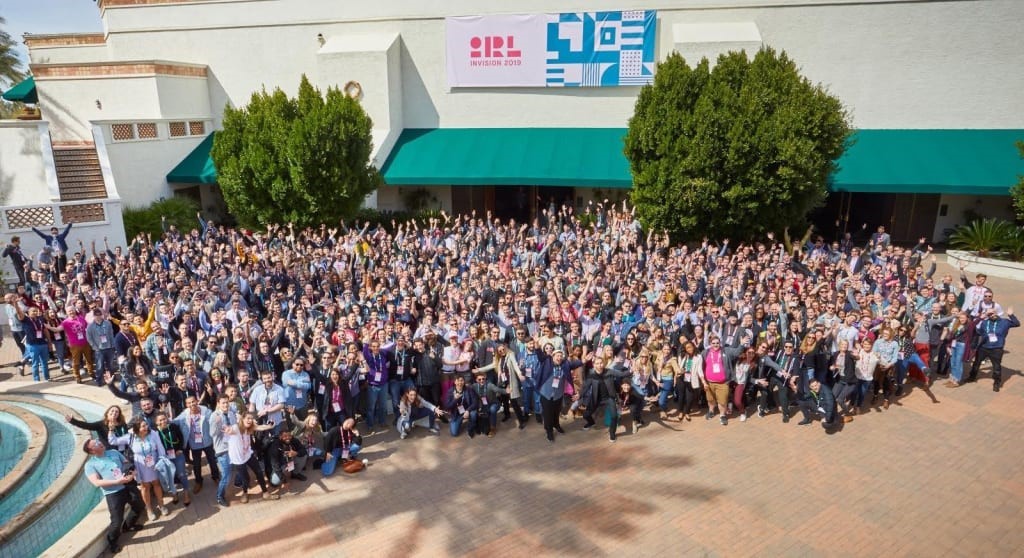The unraveling of a unicorn: Why InVision failed
The unraveling of a unicorn: Why InVision failed
In 2019, InVision was valued at $1.9 billion. Today, the design company is months away from shutting down. Blaming Figma is only half the story.
When Clark Valberg talks about InVision, the company he founded with Ben Nadel, it almost sounds as if he can’t believe its story.
It’s a Silicon Valley tale with a classic arc: Two engineers start a company, almost by accident. The company soars to success, and in less than a decade, it has grown to a staff of nearly 1,000 and is valued at $ 1.9 billion.
Then, five years after reaching its peak, the company abruptly announces it’s shuttering.
For those in the design community, InVision’s failure felt disappointing. The company had been one of design’s first and biggest cheerleaders in the business sphere, leading the charge to bring design into the C-suite of major corporations. But the company’s trajectory, in the end, is a familiar business allegory. It’s a story so quotidian in the technology world, yet shocking to anyone who isn’t familiar with how easy it is for a company to fall from grace with a few wrong moves.
So what did it take to kill a unicorn?
“Technology unfortunately failed us, and there was a fundamental shift in the market,” says Valberg, who left his CEO post at InVision two years ago. “I can admit every mistake.”
From prototype to product
In 2011, Valberg and Nadel had been working together on building a company called Epicenter Consulting that created custom mobile and web apps to help businesses boost efficiency. The two engineers were renting space within a small office in Manhattan, with an eye to expanding beyond their two desks. But rent was expensive, so instead of paying for more office space, they decided to make Epicenter an entirely remote business.
That decision allowed the pair to tap incredible talent regardless of geography, but it also came with its own challenges. It was hard to foster empathy among teammates, and gathering consistent, productive feedback was tough, as was tracking real-time project status. Valberg and Nadel realized that they could take the same software-based approach they used with their customers and apply it to Epicenter and its client work.
As a sort of internal passion project, Valberg and Nadel began coding a piece of software that they describe as “a way to turn your Photoshop design into a simulation of a product in a browser.” It was meant to fast-track the messy process between creating an early design iteration, getting feedback, and then finally coding it to be beautiful and interactive.

The software allowed the entire Epicenter team—from designers to coders to nontechnical staff—to engage with the agency’s workflow in an entirely new way. Best of all, it democratized Epicenter’s software development process and trickled down to the agency’s clients, making the entire experience more inclusive.
Valberg and Nadel began referring to the software as InVision, because it allowed the user to “envision” a product experience early in the design process. Sensing he and his team had developed something bigger than just an internal tool, Valberg decided to pressure-test it with designers he knew. He weren’t sure if anyone would actually pay for it. “The idea that someone was going to pay you for software for a month wasn’t a thing,” says Valberg of InVision’s early days. But people liked the software, so he and Nadel decided to turn it into a real product while keeping their expectations low. Valberg says at the time, he and Nadel were just hoping to pay their rent and Equinox memberships with profits from the software. But InVision quickly morphed into something much, much bigger.
In 2011, Valberg and Nadel quietly launched InVision with an $ 8 dollar monthly subscription plan. “The first paid subscription was launched on my wedding day,” says Valberg. “We were at the chuppah and my wife was like, ‘Stop looking at your phone!’ I was watching the first person purchase a subscription. People just started signing up like crazy.”
What happened next is now ancient tech history. InVision’s software took off, gaining rogue momentum and reaching a $ 1.9 billion valuation in 2019. The company snagged hundreds of millions in capital investment and amassed a roughly 1,000-person headcount over its 13 years in business. During its heyday, InVision was used at all Fortune 100 companies.
For a while, the company seemed unstoppable. “The business was screaming hot until it wasn’t,” Valberg says.
On January 4, 2024, InVision’s current CEO, Michael Shenkman, posted a letter on InVision’s website addressed to its community, announcing that the company would be closing down by the end of 2024.
Obstacles to Innovation
InVision’s success was, in many ways, a product of its time. Its software rode the crest of design’s ascent in the business world—a moment when companies like IBM were investing millions in building out their in-house design talent, and “design thinking” as a business value was springing up in business publications, such as the Harvard Business Review. “People understood that great design products win,” says Valberg.
During the mid-2010s, InVision’s most popular software product, V6, had amassed more than 8 million users. But the team had bigger aspirations. InVision had always functioned as a “companion platform.” Designers would create a wireframe or design in their chosen design tool, usually Sketch or an Adobe product, then port it over to InVision where teams could collaboratively iterate and provide feedback on the design. “It catalyzed design and development,” says Valberg. “It helped move design earlier in the process, but it also helped those organizations that were already forward-thinking. For designing customer experience, this became a way to have effective conversations.”
In 2015, the product team began working on a new version of InVision, V7, that would expand the product from a collaboration tool to a more holistic design tool where designers could do everything on InVision’s platform. At the same time, this version would move InVision from Adobe’s ColdFusion backend software to a more modern tech stack. InVision hoped V7 would allow the company to move faster and attract new tech talent who maybe wasn’t keen to work on the outdated technology.
Billy Kiely, a designer who spent more than eight years at InVision (with the last six-plus in the role of VP product design up until May 2021), says the updates were overdue, but they came at a time of superfast growth for the company when it was rapidly increasing its enterprise client base. “It tied up a significant amount of our engineering staff,” Kiely recalls. “We kept running into barriers and walls . . . A large percentage of our company was working on something that wasn’t yet customer-facing, and we were having trouble making it customer-facing. It was a focus distraction.”
Kiely says that while “V6 had a small (but mighty) team keeping the lights on,” the company chose to not continue innovating on V6 because V7 felt “right around the corner.” Instead of building features twice—for V6 and V7—InVision poured its efforts into the new software, allowing the version its customers were using to languish.
But V7 was taking longer to build and ship than Valberg had anticipated. “It went on for four years,” says Valberg. “You couldn’t back out of it. This severely limited our ability to release rapid updates to our core users—little creature comforts. This is the project that sucked all the energy, this re-platforming.”
Design software meets its market
While InVision was working on its update, a nascent industry of design collaboration tools began to take shape. Sketch had been an integral partner to InVision for years, so Valberg didn’t view it as an immediate threat to the business. Then in 2015, Figma, a San Francisco-based design tool startup, came out with a direct challenge to InVision.
Both InVision and Figma offered customers real-time communication and an accelerated creative cadence, but Figma’s software gave designers a way to create, collaborate, give feedback, and make faster decisions all from a single platform. The two were also priced differently. As the incumbent, InVision was seen as less flexible and more expensive than Figma. Designers began to notice.
Survey results published by UXTools showed that in 2017, fewer than 10% of respondents used Figma, while 60% used InVision. By 2019, the number of designers using Figma began to eclipse those using InVision for prototyping. (Figma’s founders declined an interview request for this story; leadership at Sketch and InVision also did not respond to requests for comment.)
Designers are notoriously non-discriminant when it comes to their tools, and they’ll switch to new products that work best at the moment. While InVision was seen as an industry standard for some time, plenty of designers had no qualms about migrating from InVision to other products as they emerged.
Mia Blume, a former design leader at Pinterest and Ideo and founder of San Francisco-based design leadership consultancy Design Dept., says this race for relevance is where InVision fell behind. There was a period when InVision offered a tool that helped designers break free of the Adobe product suite, but ultimately, the company was hindered by its inability to ship new features at the rate its customers required.
“This serves as a valuable reminder to designers that good design or even the promise of potential is insufficient for business success,” she says. “Staying competitive in evolving landscapes is crucial for effective design—and ultimately, business.”
Benjamin Goldman, who spent more than five years at InVision as director of InVision Films and group creative director, recalls an email from a senior account executive “sounding the alarm on Figma,” which was sent to a few C-level execs and leaders working in InVision’s sales organization. “I remember that it said he was losing more and more business to a small upstart called Figma,” says Goldman, who at the time was managing the company’s sales enablement and content strategy.
In 2016, Figma was a small competitor, says Goldman. The company was just beginning to grab some of InVision’s customer base. Looking back, they had been wrong. “There was a sense that leadership didn’t fully appreciate the competitive threat Figma posed,” he says. “A lot of people intuited that this was an irreversible trajectory.” By the time Goldman left InVision in 2021, he says, “most people acknowledged it was game over. The signs were very clear.”

InVision Studio [Image: InVision]
Valberg admits that at that time, he was more worried that Adobe would sweep the market. For years, he had fixated on trying to partner with Sketch in a way that might make Adobe a less formidable opponent. “I said, ‘Give me any level of commitment you’re willing to have where we can fight this battle together,’” Valberg recalls of conversations with Sketch cofounder and creator, Pieter Omvlee. Ultimately, Omvlee declined, and Valberg continued to focus on a race against Adobe, while his product team floundered with V7, which ultimately never reached the market.
“What could we have done differently?” Valberg says on a recent Zoom call, with a brief smirk. “We could have built something better than Figma, before Figma.”

Building a community
Despite Figma casting a shadow over InVision’s future, InVision reached unicorn status in 2019 with a nearly $ 2 billion valuation, built largely on its marketing savvy. While the product side of InVision was struggling, its content arm was thriving.
With Valberg’s marketing genius at the helm, InVision became a vocal advocate for design as an essential business vertical, proselytizing the discipline as a powerhouse of collaboration and problem-solving. It was a sophisticated approach to content marketing—one that few design companies were exploring in the mid-2010s.
“The marketing organization there was incredible; unlike anything I’d experienced,” says Goldman. Goldman’s arm of the business created podcasts, films, and books, all in the name of educating business leaders on design’s value. He says the company was “not the kind of startup to buy billboards in San Francisco and spend big on ad campaigns.” Instead, InVision’s content engine did a lot of the heavy lifting.
The company’s newsletter organically drew in 2 million subscribers, while documentary films such as Squads (which broke down the inner workings of a product team) and Design Disruptors (detailing stories of design’s success in various industries) landed repeat exposure for the company at screenings held at local AIGA chapters, regional startup conferences, schools, and independent design firms.
InVision quite clearly benefited from its thought leadership. It convinced a legion of business leaders that design (and by extension, InVision) was an important piece of the business puzzle. “[InVision] helped shape the way the industry participated in crucial conversations about the value of design,” says Blume. “I will always be grateful for that investment in the community. In many ways, I believe that this impact was far greater than the impact of their product itself.”
With the news of InVision’s closing, some in the design industry have suggested that Valberg overspent on content—possibly spending more on marketing the product than on the product. “For marketing, it was very visible where we were pouring our money. But on the product side, there was so much behind the scenes that didn’t make it to the stage at the end of the day,” says Kiely. “That was a large part of our investment . . . We were in a constant state of trying to play catch-up.”
Part of the issue was simply the company’s stage of growth, Kiely admits. When InVision was young and scrappy with a far smaller user base, it was much easier for InVision to plan for and scale innovation. Managing a re-platforming and the related data migration amid fast growth proved tough. “Customers saw a product that remained stale and fell behind [in V6],” says Kiely. “We actually built a ton of really great products and features on V7, we just failed to get it into our customers’ hands in time.”
These efforts were exacerbated by the fact that the company was fully remote from the beginning. As the company grew, the natural checks and balances of “who’s who in the zoo,” as Valberg says, didn’t happen as readily. Ironically, working remotely made working collaboratively harder as the organization scaled.
“It was a hyper-growth company,” says Aaron Walter, who joined InVision in 2016 as VP of design education before leaving in 2020. “We were trying to figure things out. We had a huge leap and a lot of money . . . When there’s a change in leadership, there’s a change in strategy, and that comes with a coordination tax.”
When asked to zoom out a bit on the company’s unraveling, Valberg says that in the end, he believes the company’s failure to launch V7 is irrelevant. He says InVision simply didn’t deliver in the way it needed to, and as a result, the company faced every quintessential business problem related to fast growth and scale. “This is a winner-takes-all market,” he says. “Designers will take the best tool, no matter what. Even if you removed all of our tech challenges, it doesn’t solve the business problem.”
Still, he likes to think that InVision’s impact goes beyond the product it did—or didn’t—launch. The company built a community around designers and managed to magnify the value of design for a business world that took a long time to notice it. “Design is the best auditorium for business strategy,” Valberg says. “It’s not, ‘How do you give design a seat at the table?’ It’s, ‘How do you make business people feel like they want to be at the design table?’”
(45)



